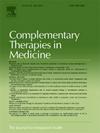A systematic review of the chronic effects of self-myofascial release on athletic performance
IF 3.5
3区 医学
Q1 INTEGRATIVE & COMPLEMENTARY MEDICINE
引用次数: 0
Abstract
Background
Self-myofascial release (SMR) is widely used by athletes and coaches during warm up and recovery to increase joint range of motion. Its long term effects on performance are less clear.
Objective
To evaluate the chronic effects, defined as at least 4 weeks, of SMR interventions on athletes physical fitness and sport specific performance, focusing on flexibility, strength, balance, and skill execution.
Design
Systematic review.
Data sources
PubMed, SPORTDiscus, Web of Science, and Scopus were searched in February 2025 in line with PRISMA.
Eligibility criteria
Experimental studies in peer reviewed English journals that examined SMR for 4 weeks or longer and reported performance related outcomes in athletes.
Results
Of 1391 records screened, 12 studies met inclusion, totaling 388 athletes aged 12–30 from soccer, tennis, water polo, volleyball, and mixed sports. Most studies reported significant gains in joint mobility, especially hip and shoulder flexibility. Several studies also showed moderate improvements in strength, such as maximal voluntary contraction and jump height, and in dynamic balance measured by the Y-Balance Test. Effects on static balance, isokinetic strength across all planes, and sport specific skills such as serve speed or sprint swimming were variable and often non significant.
Conclusion
Chronic SMR appears effective for improving flexibility and dynamic balance in athletes and may confer additional benefits for strength and motor control. Heterogeneity in protocols, comparators, and outcome measures, along with modest methodological quality, limits firm conclusions. More high quality, sport specific trials are needed to define optimal SMR parameters across training phases.
自我肌筋膜释放对运动成绩的慢性影响的系统综述。
背景:运动员和教练员在热身和恢复时广泛使用自我肌筋膜释放(SMR)来增加关节活动范围。它对业绩的长期影响尚不清楚。目的:评估SMR干预对运动员身体素质和运动特定表现的慢性影响(定义为至少4周),重点是柔韧性、力量、平衡和技能执行。数据来源:PubMed, SPORTDiscus, Web of Science, Scopus检索时间为2025年2月,与PRISMA一致。入选标准:在同行评议的英文期刊上发表的实验研究,研究了4周或更长时间的SMR,并报告了运动员的表现相关结果。结果:在筛选的1391项记录中,12项研究符合纳入标准,共计388名年龄在12至30岁之间的运动员,分别来自足球、网球、水球、排球和混合运动。大多数研究报告了关节灵活性的显著提高,特别是髋关节和肩部的灵活性。一些研究也显示了力量的适度改善,如最大自主收缩和跳跃高度,以及通过y平衡测试测量的动态平衡。对静态平衡、所有平面的等速力量和运动特定技能(如发球速度或短跑游泳)的影响是可变的,而且往往不显著。结论:慢性SMR似乎对提高运动员的柔韧性和动态平衡是有效的,并且可能对力量和运动控制有额外的好处。方案、比较物和结果测量的异质性,以及适度的方法学质量,限制了确定的结论。需要更多高质量的特定运动试验来定义跨训练阶段的最佳SMR参数。
本文章由计算机程序翻译,如有差异,请以英文原文为准。
求助全文
约1分钟内获得全文
求助全文
来源期刊

Complementary therapies in medicine
医学-全科医学与补充医学
CiteScore
8.60
自引率
2.80%
发文量
101
审稿时长
112 days
期刊介绍:
Complementary Therapies in Medicine is an international, peer-reviewed journal that has considerable appeal to anyone who seeks objective and critical information on complementary therapies or who wishes to deepen their understanding of these approaches. It will be of particular interest to healthcare practitioners including family practitioners, complementary therapists, nurses, and physiotherapists; to academics including social scientists and CAM researchers; to healthcare managers; and to patients. Complementary Therapies in Medicine aims to publish valid, relevant and rigorous research and serious discussion articles with the main purpose of improving healthcare.
 求助内容:
求助内容: 应助结果提醒方式:
应助结果提醒方式:


